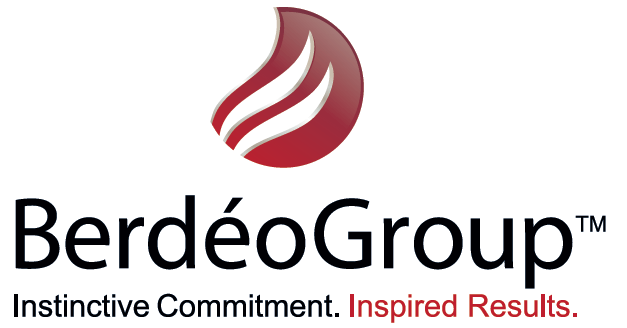Trust—it seems hard to find, but it is essential to our wellbeing.
Trust truly shapes our lives. When we flip that switch, the lights come on. We take that left turn because the oncoming driver has activated a turn signal. Neither of these occurrences is a guarantee. Yet the human condition bends toward trust. Believing the best in people is a far more enjoyable way to live than thinking too hard about our inability to control the world around us—and the workplace is no exception. Yet, too often, mistrust strips the work environment of productivity, employee satisfaction, and achievement.
As Edie Weiner, President of The Future Hunters, so brilliantly put it, trust is a new luxury—it’s in high demand but short supply. And in this age of misinformation, with social media convincing us of more reasons not to trust one another, we must work harder to rebuild that trust and then some in the workplace. Because when coworkers trust one another, everyone benefits.
Therefore, trust is truly integral to getting things done well. When leaders trust those below them to do certain jobs without a micromanaging eye, a team’s confidence in its own abilities improves. Paired with encouragement, workers are in turn willing to take on more tasks and do them well. We like proving we’re worthy of responsibility—so when our work is recognized as a valuable contribution, we’re inspired to push ourselves. The more leaders extend their trust, the more trustworthy people seem to become.
What’s more, the more employees trust one another, the more accessible collaborative work becomes. When you trust your team, you worry less about managing everyone else and put your all into the work in front of you. In this way, trust is like an ecosystem—when someone loses faith, the system can fall apart. Conversely, when everyone trusts one another, there’s more communication, positive collaboration, productivity, and room for employees to produce the best work possible.

Trust also improves individual and group function. There’s powerful neuroscience behind why trust packs a punch. Our brain has function-specific areas, its core being the limbic system, a group of brain structures responsible for emotions, behavior, and long-term memories. This makes you feel in or out of the tribe, a feeling which, at its root, is one big circle of trust. When we know we’re in the tribe, the chemistry in our limbic system tells us to relax—that we belong.
Conversation is important in positively affecting neurochemistry. When you see someone, your limbic system calls on the conversations you’ve had in the past to develop its concept of who they are. If you have an enjoyable conversation, your brain is primed to keep the positivity going and have more great encounters with them. On the other hand, if your interactions leave you feeling anxious or distressed, your brain mapping notices the negative pattern and sets you up to see that person in a more negative light than others.
So, as a leader, how do you foster a trusting workplace environment? The following are a few ideas you can put into motion ASAP:
1. Provide Support
A 2018 study found that leaders who offered support in the forms of encouragement, availability, and offering autonomy facilitated more proactive work behavior. In practice, try setting the strategy for those below you while making room for judgment and decision-making here and there. The past year has forced leaders to be more flexible and release micromanaging tendencies. Take advantage of this time and take small steps toward employee autonomy.
2. Communicate your aligned values
One trust model suggests we’re more likely to have faith in coworkers we think are competent, share similar values, and have our best interest at heart. So, find out what you all have in common and use it as a bridge of trust.
3. Dole out greater responsibilities and foster autonomy
The more important tasks you allow employees to conquer without your micromanagement, the stronger your mutual trust becomes. Work quality improves as they challenge themselves, everyone trusts each other, and a new sense of autonomy feels great for the employee—a win-win.
4. Make honesty and transparency a priority
Encourage everyone to speak their minds and make suggestions, as well as ask questions and seek guidance. Learning should be encouraged, which means everyone needs to be comfortable helping one another without judgment. This also means communicating clearly and listening to ideas and contributions.
Trust does not need to be a luxury. Leaders have the opportunity to restore it—to co-create a productive, inclusive, and respectful workplace culture. Embody what you want your employees to emulate. We can preach ad nauseum, but real transformation happens through practice—one follow-through and transparent conversation at a time.
This article originally appeared on Psychology Today Apr 13, 2021.






Excellent article! I agree with Katherine; the theme of this article goes beyond the work place. I think in order to trusted, a person has to show trust. As an attorney who encourages Collaborative Divorce for my clients, I rely on being able to trust the members of the Collaborative Team to work together and be transparent in order to best assist the couples who are transitioning into new phases of their lives. Hopefully our trust in each other will encourage two people going through divorce (an experience not usually associated with trust) to trust the other spouse, the team, and the process.
I think this article can be applied to more than just the workplace. As I was reading it, I was thinking about our trust in government, or lack there of. The lack of trust quickly creates a toxic environment. I can also see this applied to parenting and family dynamics. Giving our 7 year old more responsibilities would be a good place to start. The article also touches on the growth mindset by encouraging constant learning in the workplace. This is a big focus of my son’s first grade classroom. I really enjoyed the article and thinking about how to apply it as a stay at home mom and volunteer board member. It is difficult for me to be part of a team of organization that has a lot of distrust or distrustful members.
Very spot on. These are all things we can take to heart at work at being a better leader.